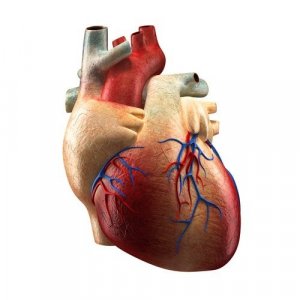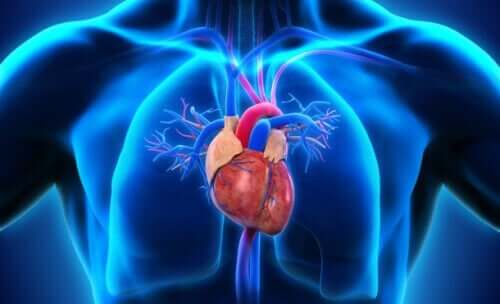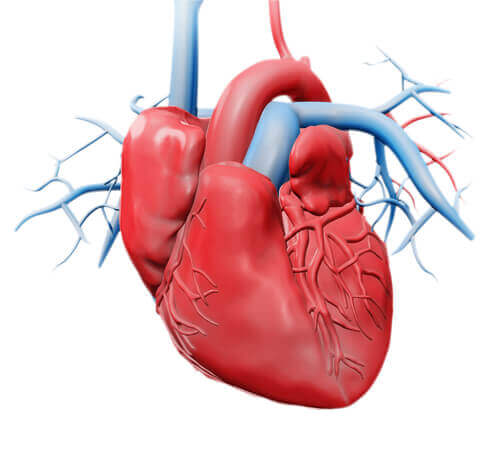The Parts of the Heart and their Functions


Written and verified by the doctor Leonardo Biolatto
The heart is one of the essential organs for life and is the main actor in the circulatory system. It’s responsible for pumping the oxygenated blood to the rest of the entire body. Although most people know how important it is, few have a comprehensive understanding of the parts of the heart and their functions.
There are many parts of the heart. However, to put it simply, you could say that it’s divided into four main cavities: the atria and the ventricles. However, many other components are essential for the heart to do its job.
The heart is almost completely formed by muscular tissue. This tissue is what allows it to contract and dilate, thus pumping blood constantly. In this article, you will learn about the different parts of the heart and how they work.
You might like: Cream of Garlic Soup for Heart Health
Parts of the heart: the cavities
There are numerous parts of the heart, but it’s important to know that they all work together in a coordinated fashion. This is what allows blood to flow in the correct direction and with the right amount of force.
First, it’s fundamental to know that the heart is a hollow organ. It is made up of four cavities: two atria and two ventricles. Also, this organ is divided into a left and a right part.
This is because the left atrium is connected to the left ventricle via the mitral valve. In the same way, the right atrium is connected to the right ventricle via the tricuspid valve.
The left atrium
The left atrium is the cavity that receives very rich oxygen blood. This blood travels from the lungs through the pulmonary veins. Then, blood passes through to the left ventricle through the mitral valve.
The left ventricle
When the mitral valve opens, blood passes to the left ventricle due to the pressure difference. In this way, the left ventricle receives oxygenated blood and then pumps it into the aorta.
In other words, when the ventricle contracts, blood passes through to the aortic artery so it can then travel throughout the rest of your body. Here’s where the aortic valve comes in as well.
The right atrium
This is another part of the heart located in the upper area. The right atrium receives oxygen-poor blood through the vena cava. This blood then passes through to the right ventricle via the tricuspid valve.
Right ventricle
The right ventricle is the last of the cavities. It allows blood to go into the lungs via the pulmonary arteries. There, the gas exchange occurs, which allows the blood to reoxygenate.
You might like: Six Home Remedies to Clean the Artery Walls
Other parts of the heart: the valves
The heart valves are the structures mentioned above and are located at the entrance and exit of the cavities. They allow blood to flow in only one direction. Therefore, they make it possible for blood to pass, for example, from the atria to the ventricles, and prevent it from receding into the atria.
The valves are:
- Mitral valve, on the left side.
- Tricuspid valve, on the right.
However, there are also valves in the pulmonary arteries and the aorta. Their function is the same: to prevent blood from returning to the cavity. This makes the heartbeat effective.
What are the least known parts of the heart?
Although the cavities and valves are the best-known parts of the heart, other components are essential for this organ to function. First, there’s the sinus node.
The sinus node is the structure that functions as a cardiac pacemaker. That is, it generates electrical impulses that are transformed into the contractions of the heart muscles.
On the other hand, there’s the atrioventricular nodule. This is also essential for the heartbeat since it allows the impulse generated in the sinus node to be transmitted correctly. The same goes for the His fascicles and Purkinje fibers.
Conclusion
The heart is a very complex and essential organ for life. In summary, it consists of four cavities and valves, which allow blood to always flow in the correct direction.
However, it is also important to know that there are also lesser-known parts, such as the sinus node, which produces and transmits the electrical impulse properly.
Similarly, it is essential to know that there are blood vessels that connect each cavity. Additionally, don’t forget that the coronary arteries are responsible for bringing the blood supply to the heart itself.
All cited sources were thoroughly reviewed by our team to ensure their quality, reliability, currency, and validity. The bibliography of this article was considered reliable and of academic or scientific accuracy.
- Anatomy and Function of the Heart Valves. (n.d.). Retrieved September 27, 2019, from https://www.stanfordchildrens.org/es/topic/default?id=anatomyandfunctionoftheheartvalves-90-P06152
- Anatomía del corazón | Vall d’Hebron Barcelona Hospital Campus. (n.d.). Retrieved September 27, 2019, from https://hospital.vallhebron.com/es/consejos-de-salud/anatomia-del-corazon
- Anatomía del corazon – Fundación Española del Corazón. (n.d.). Retrieved September 27, 2019, from https://fundaciondelcorazon.com/prevencion/como-funciona-el-corazon/mas-detalles.html
This text is provided for informational purposes only and does not replace consultation with a professional. If in doubt, consult your specialist.










